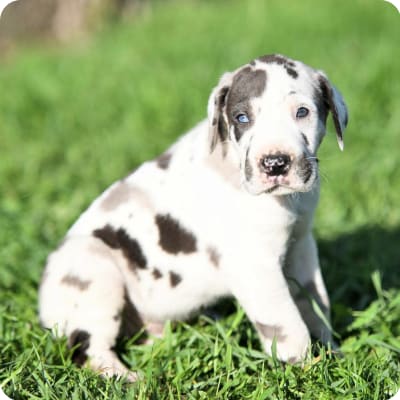Great Dane Puppies

A sweet, affectionate, and gentle giant
Great Danes are known as gentle giants due to their calm disposition and large size. They are one of the largest breeds registered with AKC and stand taller than most humans. They are sweet, but also make great guard dogs.
Great Dane At a Glance




Great Dane At a Glance
- Size: 28"-34", 100-200 lbs.
- Lifespan: 8-10 years
- Energy Level: high
- Coat: Short and smooth
- Shedding: moderate
- Hypoallergenic: No
- Dog Group: Working
- Common Nicknames: Apollo of Dogs
Great Dane Breed Guide
Learn More About Great Danes


